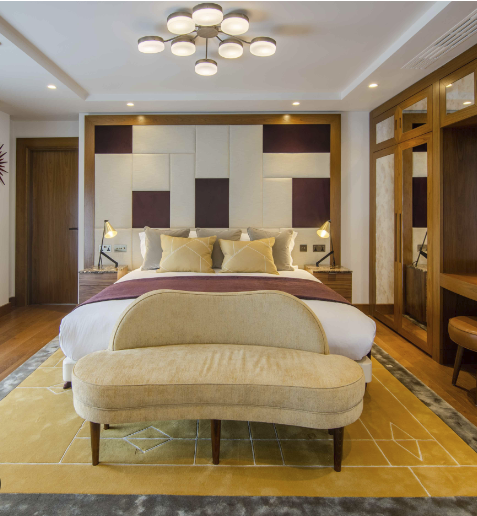Chandeliers have long been synonymous with elegance and grandeur, serving as a focal point in various architectural styles throughout history. Originating in the medieval period, these ornate light fixtures were initially crafted from wood and adorned with candles, illuminating the dark interiors of castles and churches. As time progressed, chandeliers evolved into intricate designs made from crystal, glass, and metal, reflecting the opulence of the Baroque and Rococo periods.
Today, they are not merely functional lighting fixtures but also artistic statements that can transform a room’s ambiance, adding a touch of sophistication and charm. In contemporary design, chandeliers have transcended their traditional roles, finding their place in diverse settings—from lavish ballrooms to cozy homes. They come in an array of styles, sizes, and materials, catering to various tastes and preferences.
Whether you seek a minimalist design that complements a modern aesthetic or a lavish crystal piece that evokes a sense of nostalgia, there is a chandelier to suit every space. As we delve deeper into the world of chandeliers, we will explore how to select the perfect one for your home, the intricacies of installation and maintenance, and the myriad styles available to enhance your living environment.
How to Choose the Right Chandelier for Your Space
Choosing the Perfect Chandelier Size
Selecting the right chandelier for your space involves a careful consideration of several factors, including size, style, and the overall aesthetic of the room. One of the most critical aspects is scale; a chandelier that is too small can appear insignificant, while one that is too large may overwhelm the space. To determine the appropriate size, a common guideline is to add the dimensions of the room (in feet) together and convert that sum into inches. For instance, a room measuring 10 feet by 12 feet would require a chandelier approximately 22 inches in diameter.
Matching Your Chandelier to Your Room’s Style
This formula provides a solid starting point, but personal preference and the specific layout of your room should also play a significant role in your decision-making process. Beyond size, the style of the chandelier must harmonize with your existing decor. If your home features a modern aesthetic characterized by clean lines and minimalism, a sleek metal or geometric design may be more suitable than an ornate crystal piece. Conversely, if your space is imbued with traditional charm, a classic chandelier adorned with crystals or intricate detailing can enhance its character.
Considering the Function of the Room
Additionally, consider the function of the room; for example, a dining room chandelier Scluda should provide ample light for meals while also creating an inviting atmosphere. By thoughtfully evaluating these elements, you can select a chandelier that not only illuminates your space but also elevates its overall design.
Installing and Maintaining Your Chandelier
Once you have chosen the perfect chandelier for your home, the next step is installation. While it may be tempting to tackle this project on your own, enlisting the help of a professional electrician is often advisable, especially for larger or more complex fixtures. Proper installation ensures that your chandelier is securely mounted and wired correctly, minimizing the risk of accidents or electrical issues.
Before installation begins, it is essential to turn off the power at the circuit breaker to avoid any electrical hazards. Additionally, consider the height at which you want to hang your chandelier; a general rule of thumb is to position it approximately 30 to 36 inches above a dining table or kitchen island to allow for comfortable conversation and movement. Maintenance is equally important in preserving the beauty and functionality of your chandelier.
Regular cleaning is necessary to prevent dust and grime from accumulating on its surfaces, which can dull its shine and diminish its overall impact. Depending on the material of your chandelier—be it crystal, glass, or metal—different cleaning methods may be required. For crystal chandeliers, using a soft cloth and a mixture of water and vinegar can effectively remove smudges without damaging the delicate surfaces.
For metal fixtures, a gentle polish can restore luster and remove tarnish. Additionally, it is wise to periodically check for loose bulbs or wiring issues to ensure that your chandelier remains safe and operational.
Different Styles and Designs of Chandeliers
The world of chandeliers is rich with diversity, offering an extensive range of styles and designs that cater to various tastes and preferences. Traditional chandeliers often feature intricate details such as ornate scrollwork, crystal embellishments, and candle-like bulbs that evoke a sense of timeless elegance. These classic designs are frequently found in formal dining rooms or grand entryways, where they serve as stunning focal points that draw the eye upward.
In contrast, contemporary chandeliers embrace minimalism and innovation, often incorporating geometric shapes and unconventional materials like acrylic or metal mesh. These modern pieces can seamlessly integrate into urban lofts or chic apartments, providing an artistic flair without overwhelming the space. In addition to traditional and contemporary styles, there are also eclectic designs that blend various influences to create unique lighting solutions.
Industrial-style chandeliers often feature exposed bulbs and raw materials like wrought iron or reclaimed wood, making them ideal for spaces with a rustic or vintage vibe. Meanwhile, bohemian-inspired chandeliers may incorporate colorful beads or woven elements that add warmth and personality to a room. For those who appreciate nature-inspired aesthetics, chandeliers designed with organic shapes or floral motifs can bring an element of tranquility indoors.
With such an array of options available, homeowners can easily find a chandelier that resonates with their individual style while enhancing their living environment.
Chandeliers are versatile lighting fixtures that can enhance various spaces within a home, each serving distinct purposes depending on their location. In living rooms, chandeliers often act as statement pieces that set the tone for relaxation and socialization. A well-placed chandelier can create an inviting atmosphere while providing ample illumination for reading or entertaining guests.
When selecting a chandelier for this space, consider its size in relation to the room’s dimensions and furniture layout; it should complement rather than dominate the area. Additionally, dimmable options can offer flexibility in lighting levels, allowing homeowners to adjust brightness according to mood or occasion. In dining rooms, chandeliers play an equally significant role by not only illuminating the table but also enhancing the overall dining experience.
A beautifully designed chandelier can elevate even the simplest meals into special occasions by creating an ambiance of warmth and intimacy. When choosing a chandelier for this space, consider its height; it should hang low enough to provide adequate light without obstructing views across the table. Furthermore, selecting a fixture that reflects your personal style—whether it’s modern elegance or rustic charm—can enhance the overall decor while making mealtime more enjoyable.
DIY Chandelier Makeovers and Customizations
Simple yet Effective Transformations
Transforming a chandelier can be as simple as changing its color or adding embellishments like beads or crystals to enhance its visual appeal. For instance, painting an outdated brass fixture with a fresh coat of matte black or metallic gold can instantly modernize its look while allowing it to blend seamlessly with contemporary decor.
Adding Texture and Personality
Incorporating decorative elements such as fabric shades or floral accents can add texture and personality to an otherwise standard piece. You can also repurpose vintage chandeliers into unique lighting solutions that reflect your individual style preferences.
Unconventional Materials and Whimsical Touches
Using unconventional materials like driftwood or mason jars can create an eye-catching centerpiece that showcases your personal flair while maintaining functionality. Alternatively, you can strip down an old chandelier to its frame and adorn it with colorful ribbons or twinkling fairy lights for a whimsical touch in a child’s bedroom or outdoor space.
By embracing DIY chandelier makeovers and customizations, homeowners can create one-of-a-kind pieces that not only illuminate their spaces but also tell their unique stories.
Tips for Incorporating a Chandelier into Your Home Decor
Incorporating a chandelier into your home decor requires thoughtful consideration to ensure it complements your overall design scheme while enhancing the ambiance of each space. One effective strategy is to establish a cohesive color palette throughout your home; selecting a chandelier that incorporates colors found in adjacent rooms can create visual harmony and flow between spaces. For instance, if your living room features warm earth tones, choosing a chandelier with similar hues can tie together different areas while adding depth and interest.
Another essential tip is to consider scale and proportion when placing your chandelier within a room. A large chandelier may serve as an impressive focal point in an expansive foyer but could feel overwhelming in a smaller space. Conversely, opting for smaller fixtures in larger rooms may lead to visual disconnection.
To achieve balance, consider grouping multiple smaller chandeliers together or selecting one statement piece that draws attention without overpowering other design elements. Ultimately, by thoughtfully integrating chandeliers into your home decor strategy—considering color schemes, scale, and placement—you can create inviting spaces that reflect your personal style while showcasing these stunning light fixtures as integral components of your interior design narrative.




